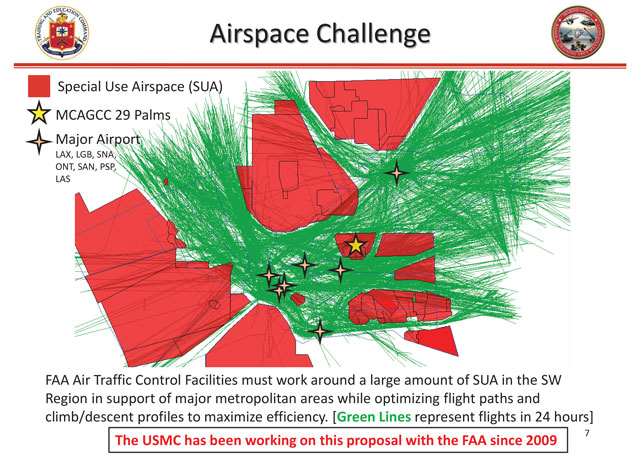Southern California MOA requests raise concerns
AOPA remains engaged in years-long process

Navigating in and around Southern California stands to pose special challenges in August, when the military plans 18 days of exercises within a vast expanse if airspace centered on the U.S. Marine Corps Air Ground Combat Center in Twentynine Palms, California.
AOPA continues to have significant concerns about the various temporary military operations area (TMOA) proposals, including the desire by military leaders to make them permanent. Association staff members continue to review the proposals for six TMOAs to identify impacts and potential mitigations. Along with the TMOAs, the FAA released on March 29 (for publication March 30) a notice of proposed rulemaking to establish temporary restricted areas to facilitate the planned military exercises.
AOPA staff will participate in a safety panel related to the proposed restricted areas to help identify impacts, hazards, and potential mitigations to ensure the area remains accessible to general aviation. Military exercises are planned over the course of 18 days in August, and members are encouraged to review the proposals and submit comments by May 3 to the FAA and send a copy of comments to AOPA.
The proposed TMOAs, Bristol, CAX, Johnson Valley, Sundance Valley, and Turtle Low, begin at low altitude and well below the minimum en route altitude of affected airways, and extend up to 40,000 feet msl in many locations. Navigating around these areas will create significant impacts to VFR and IFR traffic, including fuel costs and miles flown.
The affected areas encompass many heavily traveled airways, magnifying the potential impacts. The dates, locations, altitudes, and other details are included in an FAA notice that also lists a postal address where comments can be mailed by May 3.
AOPA and industry stakeholders have met with the Marines on their proposal to make the special-use airspace permanent, and will continue to work to protect general aviation access. The proposal to make the airspace permanent also will be subject to public comment once it is published by the FAA.



